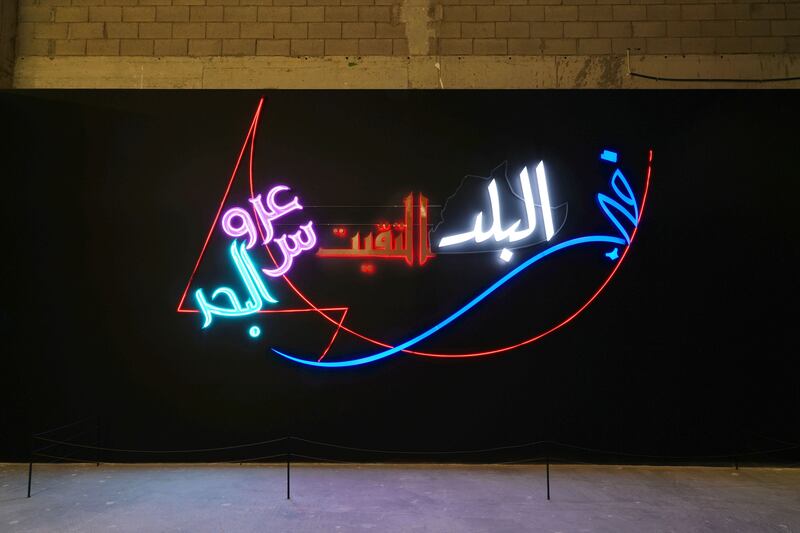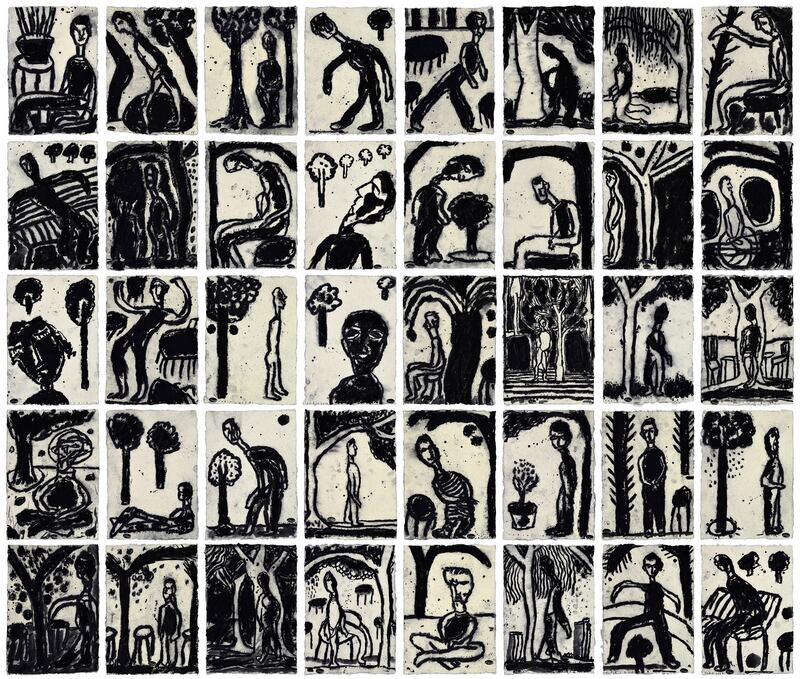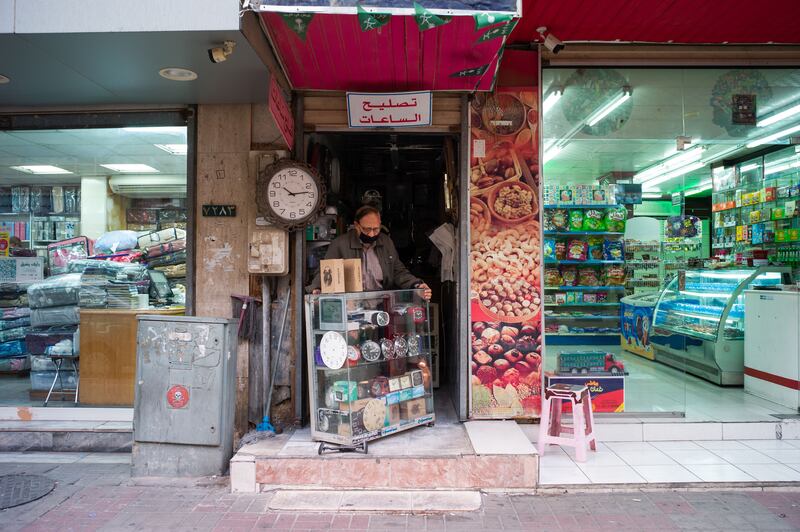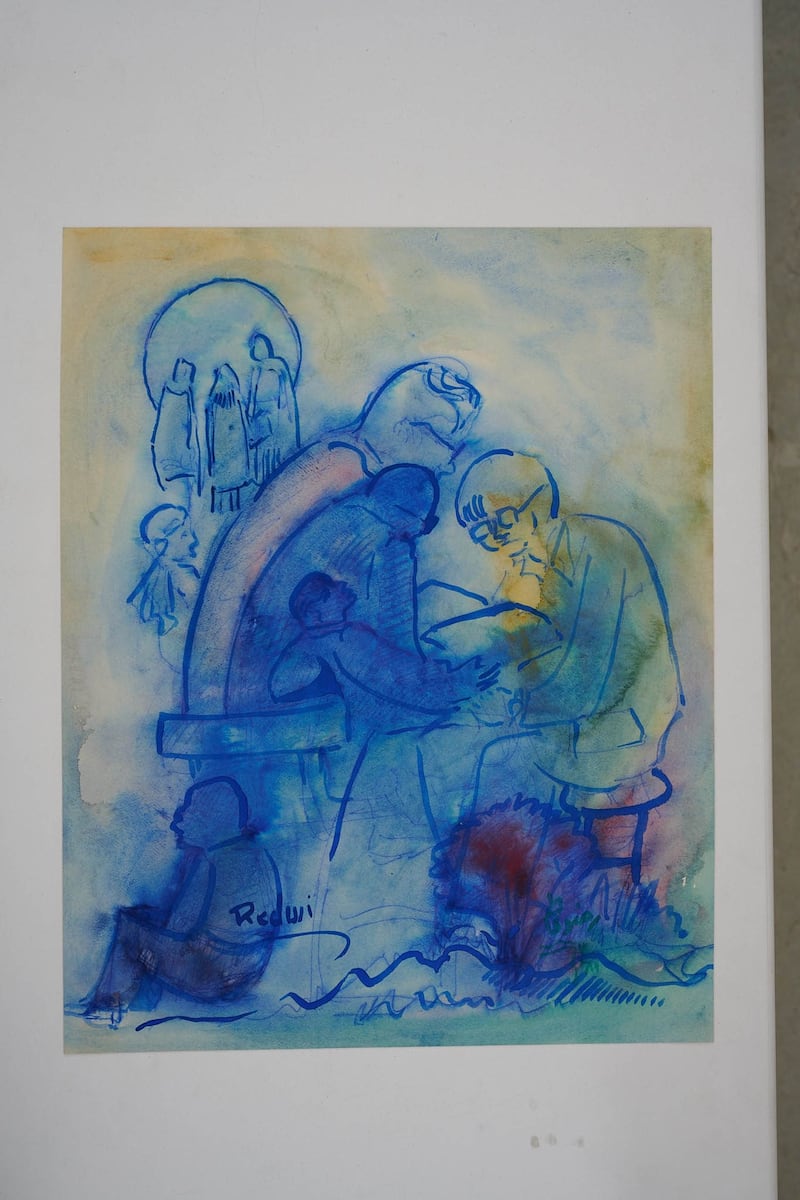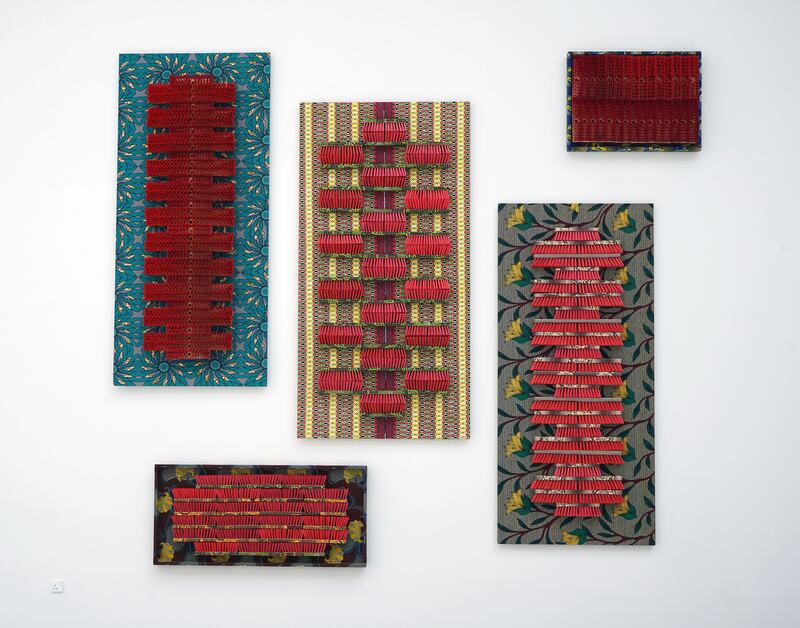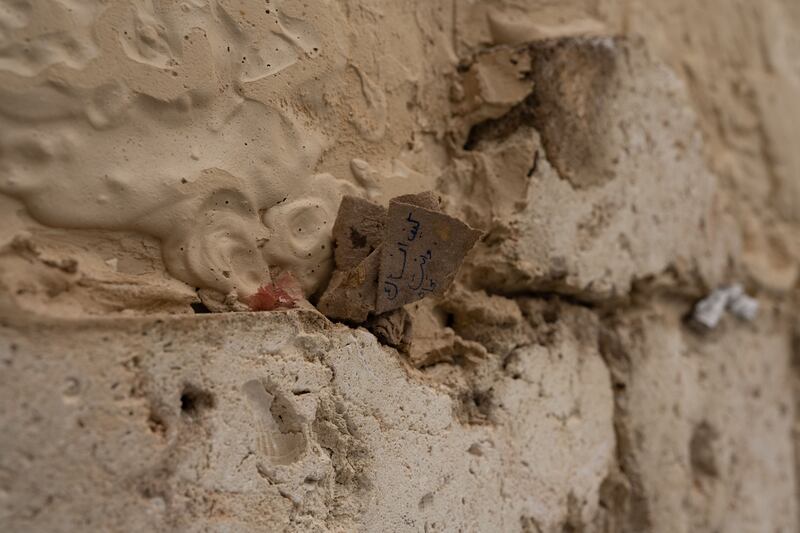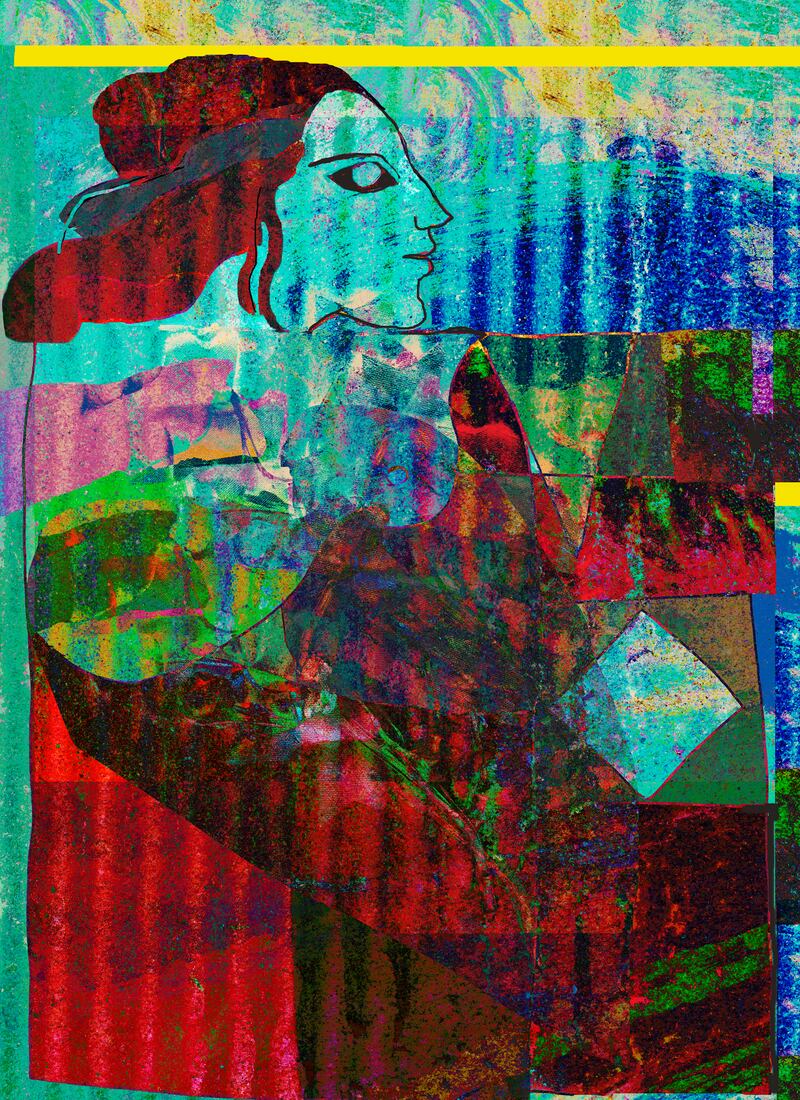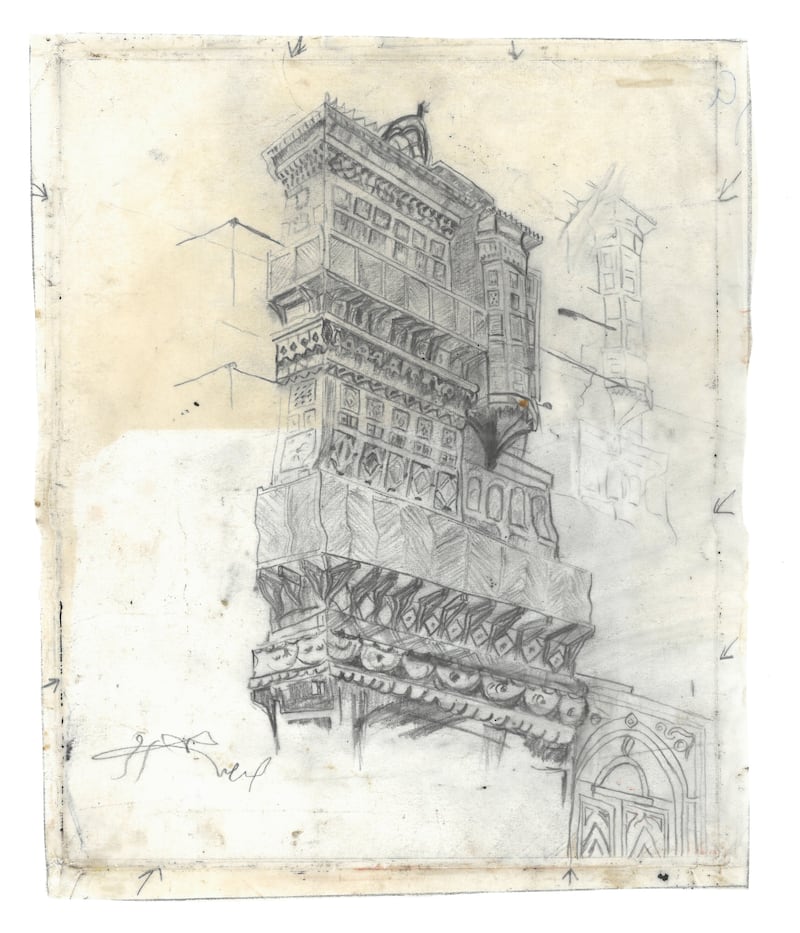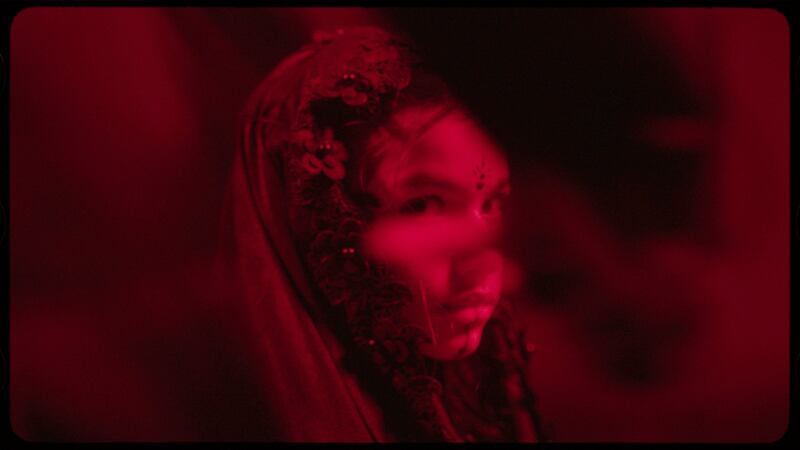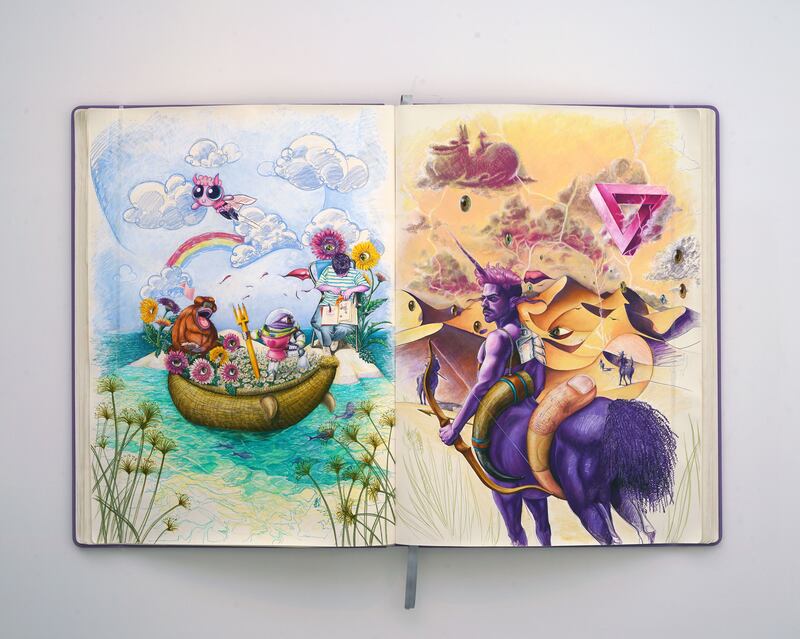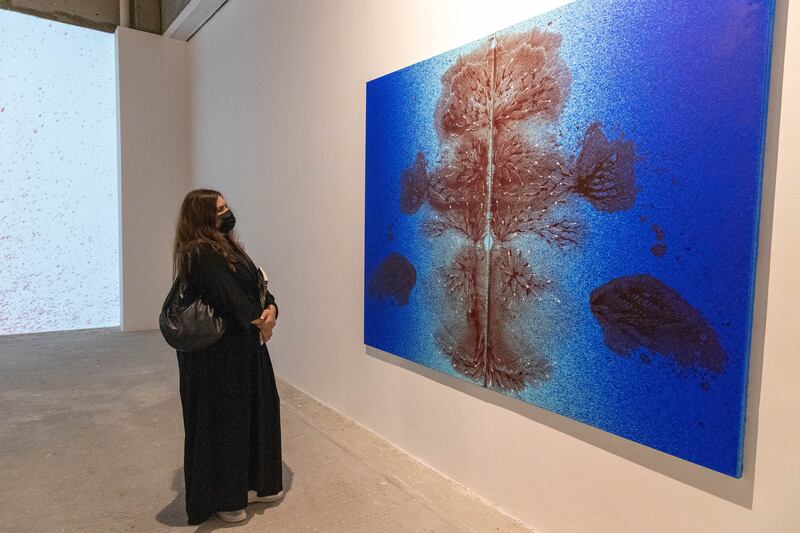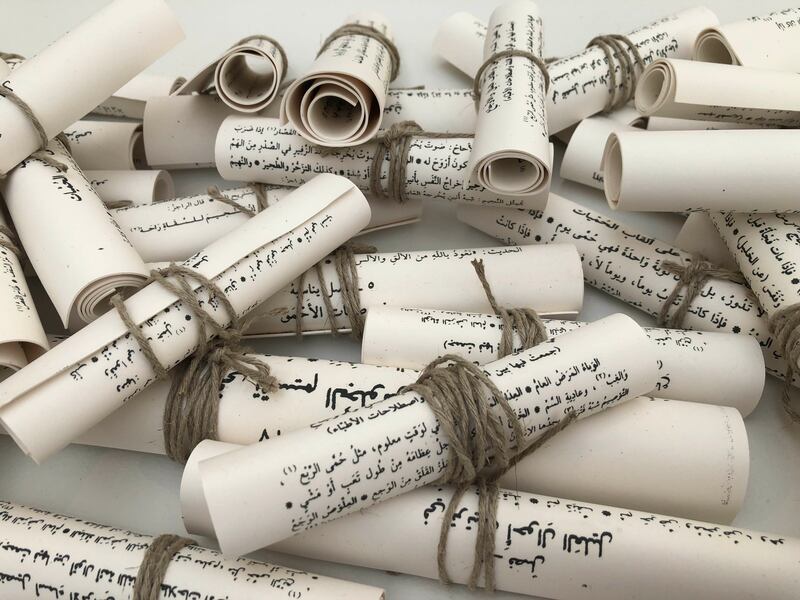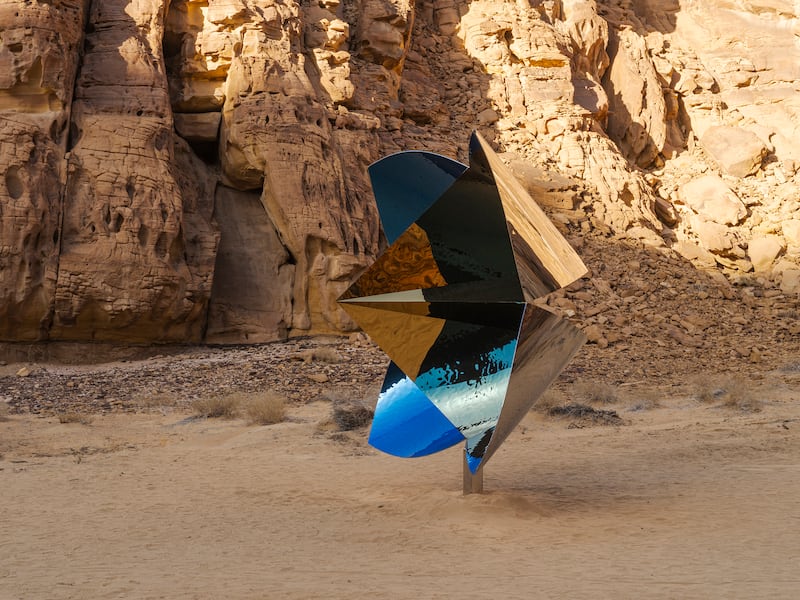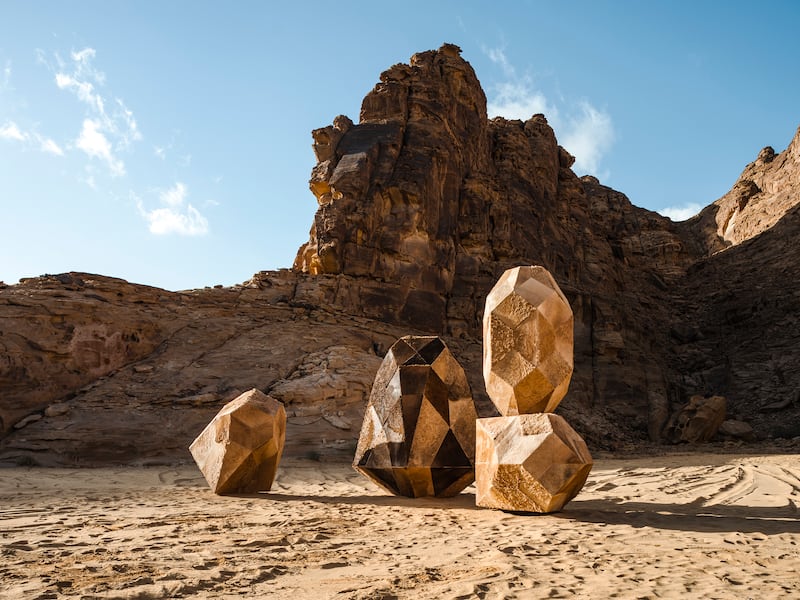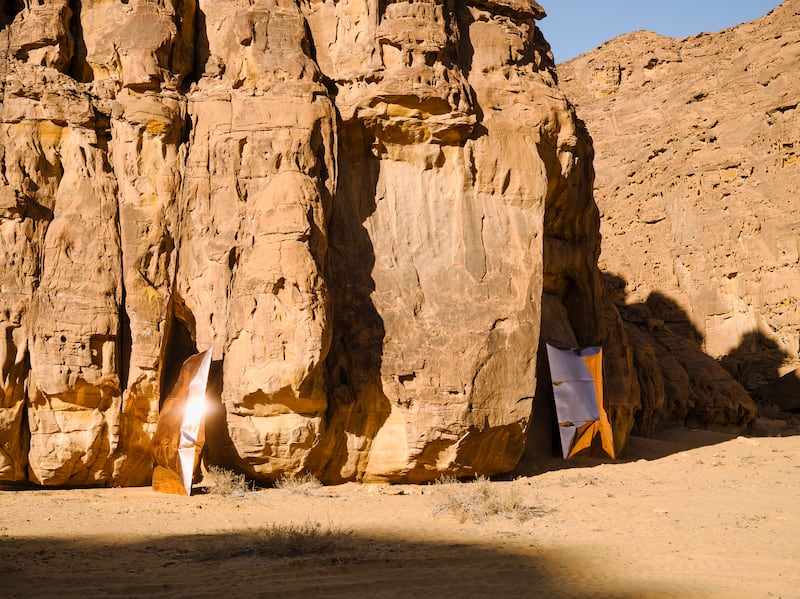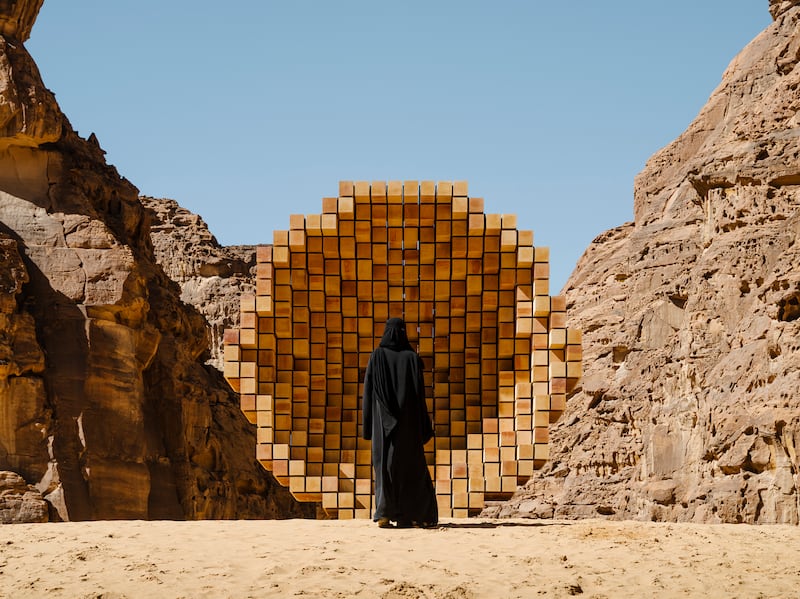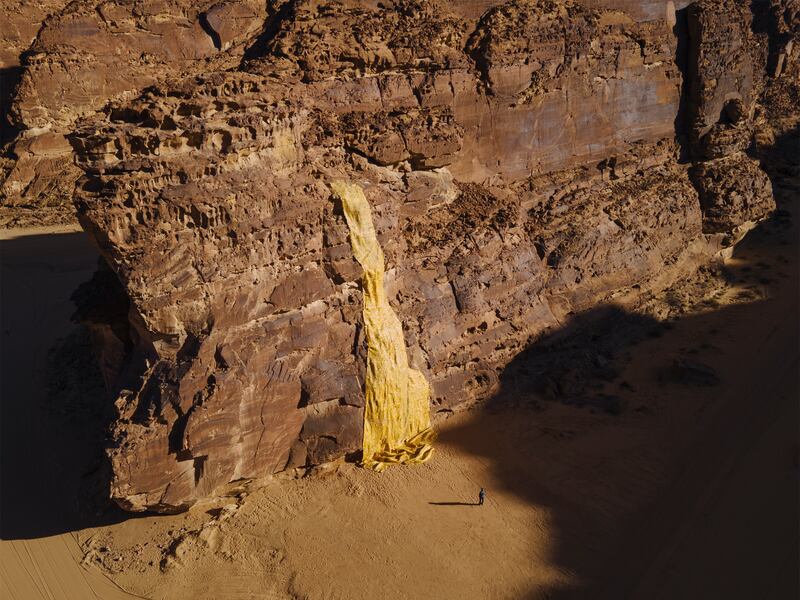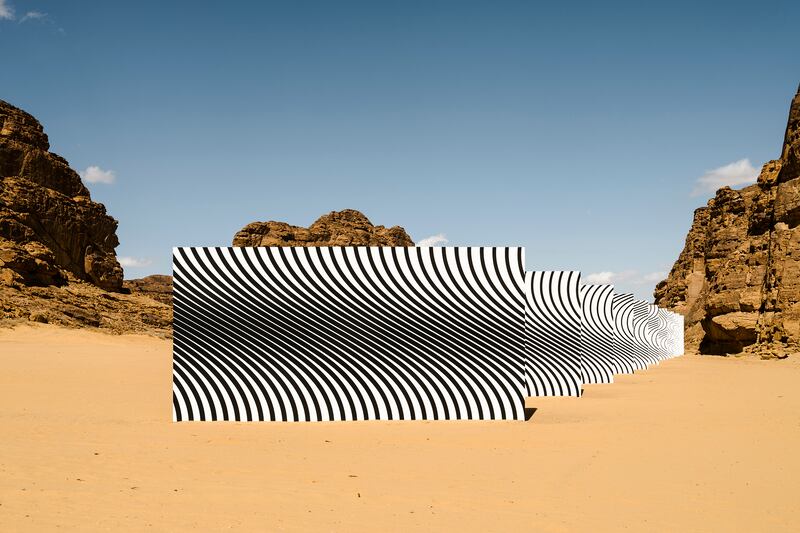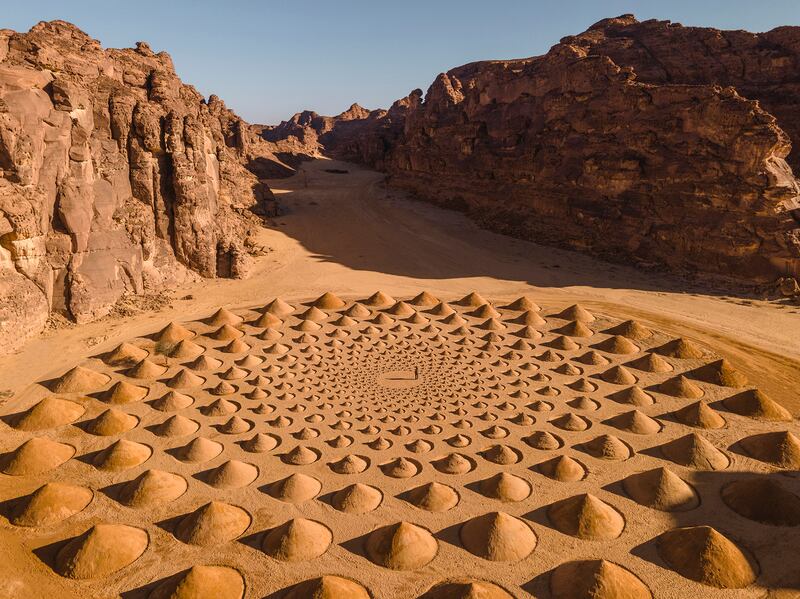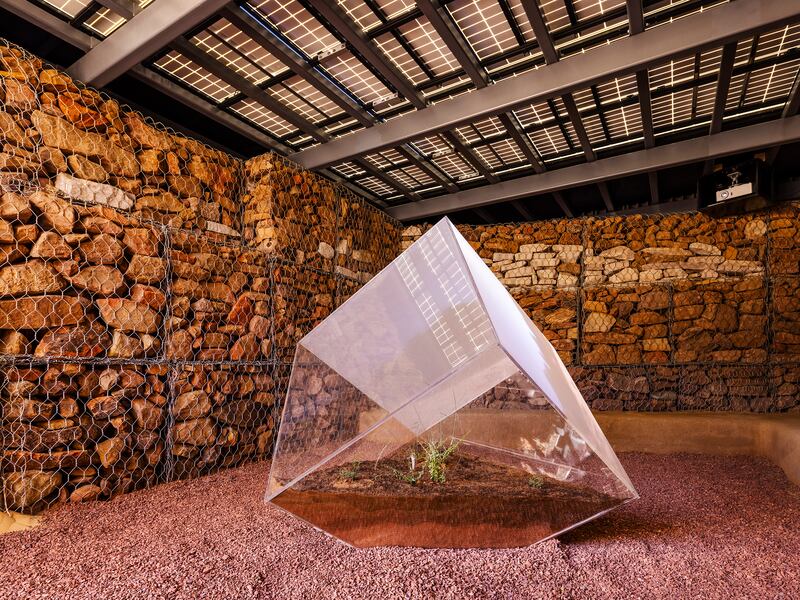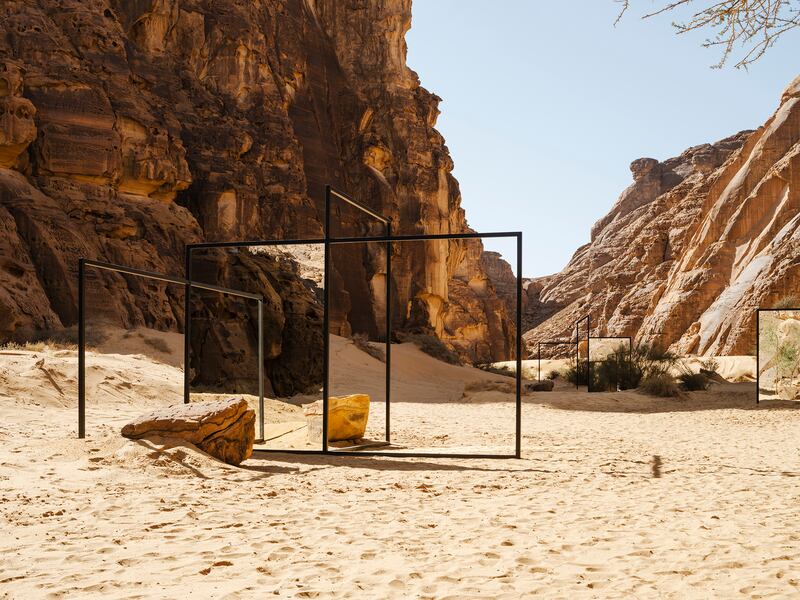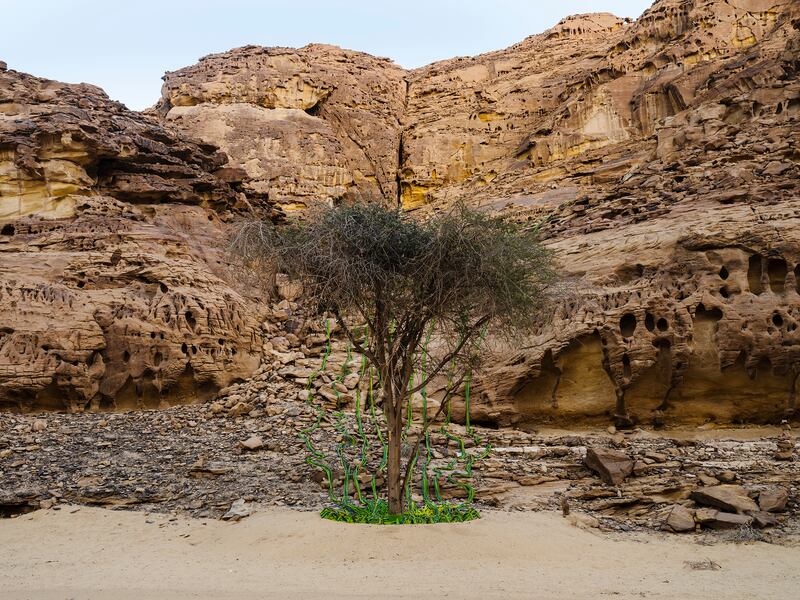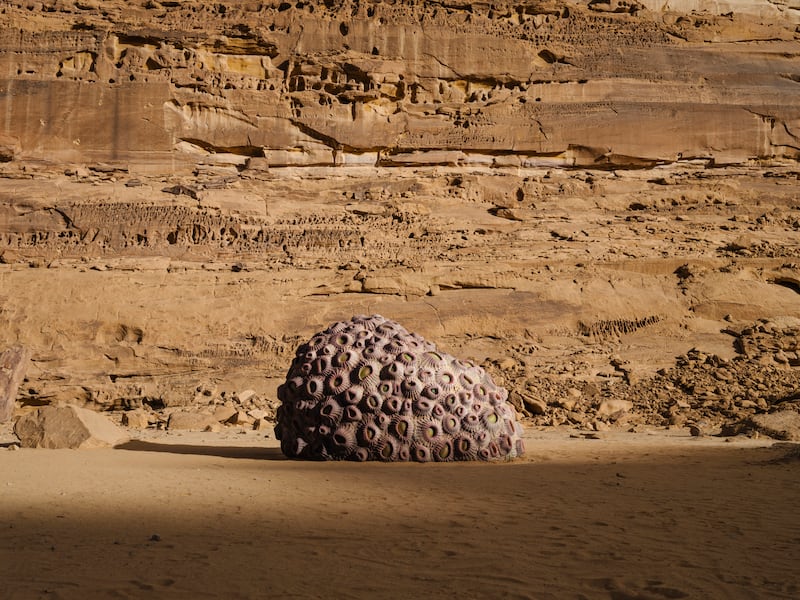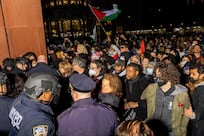“What is your place — your makan?” curator Venetia Porter asked the artists for the latest 21,39 exhibition, The Saudi Art Council's annual initiative. “Can you take me to it?”
Porter’s show, Amakin, opened in March in Jeddah. It has now travelled for the first time in the programme's history, launching on Thursday at the King Abdulaziz Centre for World Culture — Ithra, the Saudi Aramco-funded art centre in the Eastern Province.
Porter's question yielded an intimate, personal and cross-generational exhibition, as visions of home — a changing home, a home one cannot go back to, a home being destroyed by climate change — emerge among the works by 28 artists.
Scroll through the gallery above to see some of the works on show at Ithra
“It was the era of endless Zoom conversations,” she recalls about her preparations for the exhibition, saying her initial plan had been to organise a group field trip across Saudi Arabia. The Covid-19 pandemic gave her video meetings instead, and an extra year to organise it, which she put to use researching young artists or lesser-known parts of historical practices, showing these alongside established Saudi and international names.

Places emerge through stories, with many of the works gesturing towards recalled or imaginary narratives, or personal and family memories. In a lovely pairing, Emy Kat captures Al Balad in Jeddah without a single image of a mashrabiya or carved woodwork. Instead, he exhibits close-ups of the bright cerulean blue found in the Old Town, in a choppy, stop-and-start grid — a throwback, he says, to when he used to wander through Al Balad as a boy and get lost in its labyrinth. The memory from his childhood sits alongside portraits of the small children who accompanied him when he went to shoot the photographs on a residency in 2012, on a visit from France.
Placed next to this is a wall made of the crumbling coral material of Al Balad, by Asma Bahmim, in which she has incorporated folded up bits of paper featuring her wishes, with snippets of their hoped-for outcomes barely visible.
Bashaer Hawsawi shows wall-based textile works in Cleansing (2019), for which she places the bristles of a red plastic broom on to African fabrics in neat, gridded patterns. Here, the materials tell of Hawsawi’s family history: some of her family were mutawifun, who take care of the pilgrims to Makkah, and who came from Nigeria generations ago.
One of the exhibition's highlights is the video Yallah, Yallah Beenah! (2022) by Mohammed Hammad, a surrealist take on the entrance into adulthood, complete with talking feet and laser-eyed witches. This note of surrealism and visual spectacle resonates throughout several works by young creators in the show, co-existing with Porter’s predilection towards artists’ books and works on paper.
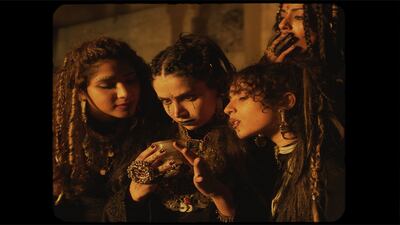
At times, the tempo shift from spectacle towards the intimacy of artists' book is abrupt, but it is interesting to watch how the younger cohort of creators sought after both scale and the private reflection usually associated with drawing or notebooks. Obadah Aljefri, for example, created a giant lavender Moleskine notebook, adorned with kitsch, fantastical drawings that he describes as a collaboration between himself in the present and the child he used to be. Ending the show is Sara Abdu's sublime presentation of The Infinite Now, 15 hanging scrolls of paper in which she attempted to write a straight line in henna ink — a perforative act that attempted to site her “place” as out of body, out of mind.
Porter is the longtime curator of Islamic and contemporary Middle East art at the British Museum, where she has built up for the museum an important collection of works on paper. Her specialism in this area also grounds the 21,39 exhibition in a classicism, of the skills of draughtsmanship and calligraphy, which are on the wane in contemporary art. In some cases, that means showing the work of artists who still come up through classical training, such as Pakistani creators Imran Qureshi or Aisha Khalid, both in Lahore. Khalid’s green-textured patterns, minutely drawn, are overlaid with gold-leaf shapes in an evocation of the Kaaba.
Porter also reaches back into the past to show substantial presentations of senior names, such as Dia al-Azzawi, Safeya Binzagr and Abdulhalim Radwi, where the focus on the works on paper provides a glimpse of the artists' hand, something the formality of major creations usually obscures.
“I’m interested in artists who use paper. That is, I'm interested in process. In drawings, you can feel the hand of the artist, see their thought process,” Porter tells The National.
For Binzagr, for example, instead of her oil paintings, Porter chooses her watercolours, sketches and etchings — by far her more interesting work — in which Binzagr documents traditional rites, activities, children’s games and the dresses of different tribes of the kingdom. Juxtapositions of preparatory sketches and their outcome in etchings and prints demonstrate the process Binzagr took towards her final product.
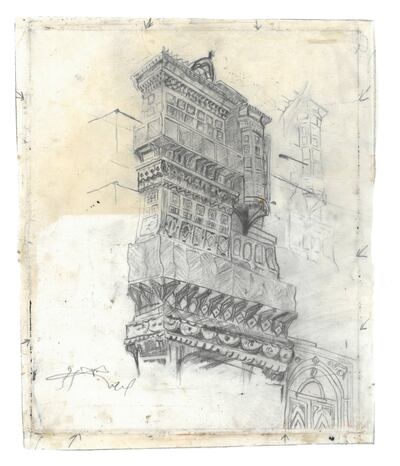
Similarly, Porter shows not only Radwi's well-known, symbolist paintings, but the trove of sketches that he kept in his studio.
“For Radwi, too, most people know him for his oil paintings,” she says. “At one point I asked, what else does he have in his estate? And his son brought out an enormous portfolio with these drawings, which are completely unknown, unpublished. They’re undated, so they’re obviously pieces he did not expect to exhibit.
"You see in these drawings an informality that you lose in the oil paintings. And at one point, he clearly decided he wanted to experiment with print gouaches. So this has been an opportunity to find, even from the established artists, work that people don't normally associate with them.”

Porter also researched the artists of the Department of the Cultural and Arts Society in the Eastern Province (the Jame’a Al Thagafah wa Alfunoon), which emerged in the 1990s and is less well known than other modernist art societies in the kingdom. Some exquisite works by Abdulrahman AlSoliman, new for the Ithra exhibition, display the Al Sharqiya painter’s responses to the damage done to the coast during the First Gulf War, when oil spills travelled up from Kuwait and decimated bird and plant life.
The historical additions help move the exhibition away from the same roster of artists that Saudi Arabia's scene at times cycles through. Indeed, this is the first fully public 21,39 since the Covid-19 hiatus (the art historian Fabien Danesi curated a show for last year that was unable to open), and it emerges in a new context in the kingdom's contemporary art landscape.
Once alone in its goals, it now sits among Diriyah Biennale, Desert X AlUla, the myriad Ministry of Culture projects and those of the new Jeddah arts complex Hayy Jameel, located not far from 21,39’s traditional Gold Moor mall digs.
Having 21,39 at Ithra underlines the fact that all these exist in a spirit of collaboration instead of competition, says Farah Abushullaih, head of Ithra Museums.
“The Saudi Art Council is one of the most established entities in the kingdom,” she says. “They’re a part of the movers and shakers of the industry. We share a similar vision and mission when it comes to wanting to support and develop the local ecosystem here in the kingdom, but also to make sure that we show international voices as well.”
Future 21,39 exhibitions might again travel to Ithra, says Abushullaih. At Ithra, the museum is re-examining its programming after two years of extreme disruption, as with everywhere else in the world. A more local emphasis is likely to take hold, perhaps because the enforced locality of lockdown has made artists and curators realise, as Porter did for Amakin, how much research there is to be done about the communities we already live in.
Amakin is at King Abdulaziz Centre for World Culture — Ithra in Dhahran until September 30; www.ithra.com
Scroll through the gallery below to see images from Desert X AlUla 2022
